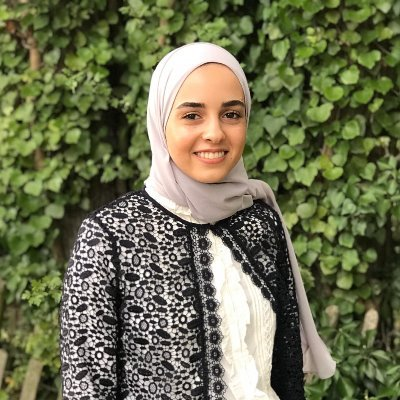‘The project I work on involves building an exoskeleton (a robotic suit), that can be worn by children with Cerebral Palsy’
Rania Kolaghassi, Research Student at Kent, studied BEng Biomedical Engineering and graduated in 2019. We caught up with Rania about transitioning from undergraduate study to a PhD, her current research project, and her advice for students thinking about a postgraduate research degree.
How do you feel your time at Kent prepared you for working in the industry?
Kent taught me the theory behind the topics I was interested in, but it also allowed me to carry experiments and projects in the labs, where I gained strong theoretical and practical skills. It taught me the processes and resources needed to learn, enabling me to continuously seek knowledge even after graduation. This is paramount especially in the field of technology that is advancing rapidly. We might end up working in fields we weren’t aware existed at the time of our studies, so we should never stop learning.
What did you learn in your degree that has been beneficial to you in your role?
I considered biomedical engineering an interdisciplinary course. It felt like a double degree due to the large number of diverse modules we took from both the department of biosciences and the department of engineering. Most of the time, research is interdisciplinary, involving knowledge from several areas, and necessitates collaborating with people from different fields. My degree made me open to exploring and learning about newer fields and merging knowledge from different areas.
What are your main responsibilities and tasks?
My main responsibility is implementing Intelligent models to assist with analysing human motion. I research the use of state-of-the-art machine and deep learning models in gait analysis and compare and analyse the outcomes. My work also involves processing the data I use to build these models.
Are you working on any exciting projects that you can share?
Yes, the project I work on involves building an exoskeleton (a robotic suit), that can be worn by children with Cerebral Palsy, which is a neurological disorder. The exoskeleton will help with the rehabilitation of those children. It has the potential to be developed into a device that can be worn daily, assisting with performing activities, such as walking, climbing the stairs etc.
What are your plans for the future?
At the moment, I’m working towards completing my PhD. I haven’t decided which area I’d like to specialise in afterwards, but I would definitely be open to exploring other biomedical applications. I enjoyed doing research, so I will try and continue that as well.
What advice would you give to someone wanting to follow the same career path?
Challenge your preconceptions. You might come thinking that you like a topic or a field, or even dislike it. For example, you might think you prefer biomechanics to biomaterials, or that you’re better in hardware than software. The only way to know is if you try and do it, that may change your opinion regarding it. You might also end up finding an area that you truly enjoy. Don’t fear trying new things, they may open new opportunities for you.
What was your favourite memory from your time at Kent?
Working on projects and assignments with my friends in the workshop. Having them around made it more enjoyable and it was always great to share with them when things work, and when they don’t!

